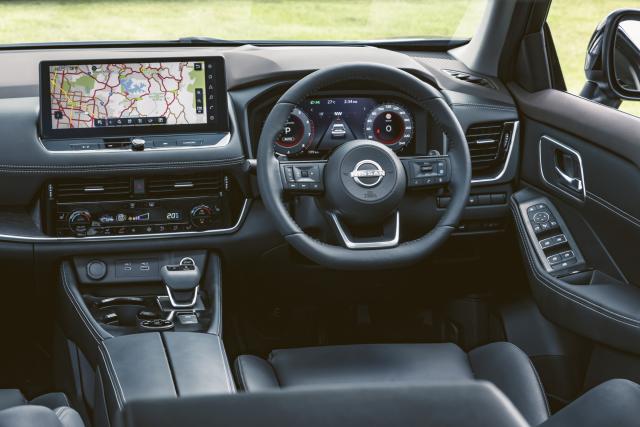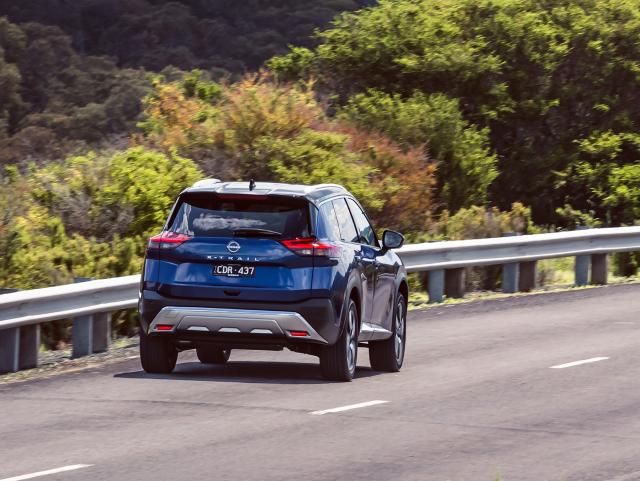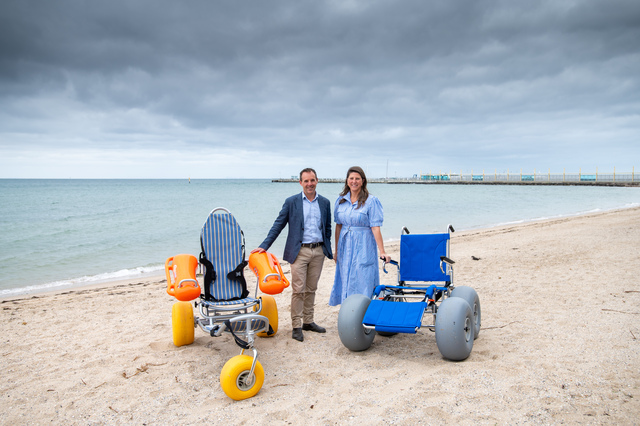In one of the most competitive segments of the automobile industry one company has called on rivals for one of its most important products. Nissan has put together its fourth generation X-Trail with parts from the Mitsubishi Outlander on a Nissan-Renault Alliance CMC-F platform.
Weighing in with six petrol-powered variants in front or all-wheel drive – there are two e-Power hybrid electric vehicles on the horizon – the bitser takes on the task of making up ground on well-established rivals such as Toyota RAV4, Mazda CX-5, Kia Sportage, Hyundai Tucson.
The new X-Trail comes with a 2.5-litre four-cylinder petrol engine in front-wheel drive, or optional Intelligent 4×4, with all four grades – ST, ST-L, Ti and Ti-L, with a mix of five or seven seats – fitted with an Xtronic Continuously Variable Transmission.
Well-equipped from the entry-level ST front-wheel drive at $36,750, plus on-road costs, to the range-leading Ti-L AWD, $52,990, on test was the ST-L AWD 7 seat priced at $46,290.
All X-Trails are covered by Nissan’s five-year unlimited kilometre warranty and roadside assistance over the same period. Service packages are available.
STYLING
Nissan says the new CMF-C platform, from its alliance with Renault, allows for 27 per cent greater torsional stiffness than before, while the use of ultra high-tensile steel in the body has almost doubled over the old car.
Weight savings have been found by using composite material for the rear tailgate, and aluminium for the front and rear doors, front fenders, and bonnet.
The test car paint job turned out to be something of a work of art, the basic white with black highlights really holding the redesigned rear together, giving the vehicle a unique, sharper look than before.
The signature V-Motion grille and double-decker headlamps add to the Nissan(ness) of the MY23 model, while two-tone body colours – white and black here – make their Nissan debut. The ST-L rolls on 18-inch alloy wheels.
INTERIOR
A spacious cabin is versatile, with sliding second row seats to allow for passable access to the optional third row, maximising seating for up to seven. Rear doors open wide, allowing ease of loading.
Despite retaining the same 2705mm wheelbase as the previous X-Trail, there’s more space in the second row, with generous leg and knee room. There’s no skimping on headroom. The big let-down, however, is the lack of legroom in a third row only suitable to take children.
Synthetic leather seats, heated at the front, include power-adjustable driver’s seat. There’s dual-zone climate control, 360-degree parking camera view, auto-dimming rear-view mirror and leather-accented steering wheel. Inside, the vehicle is dominated by black surrounds.
However, brown inserts scattered around the cabin, plus white contrasting stitching surprisingly give the gloom a lift.
Storage includes generous cup holders up front, room for big bottles in the doors and a huge central bin. Under the console is another large tray.
The boot floor is split into two removable panels that lift and slot in vertically to separate and hide items. It also includes limited under-floor storage for slimmer items. The X-Trail has a temporary spare wheel.
INFOTAINMENT
The ST-L is fitted with an 8-inch infotainment touchscreen, wired Apple CarPlay and Android Auto, Bluetooth, and AM, FM and DAB+ digital radio.
There’s a USB-A and C port up front – two more USB ports (one USB-C and one USB-A) in the back – and a wireless charger.
One blessing is the air-conditioning controls are left out of the touchscreen, instead in the form of a row of dials and buttons that are easy to use when driving. The driver also can take advantage of an instrument display consisting of twin analogue dials flanking a 7-inch screen with important info such as speed, fuel economy, safety systems and tyre pressures.
ENGINES/TRANSMISSIONS
Launching on a brand-new platform, the new X-Trail is offered with a 2.5-litre four-cylinder petrol engine – the same unit as in the Outlander – producing 135 kW of power and 244 Nm of torque.
In front-wheel drive or optional Intelligent 4×4, all grades are fitted with an Xtronic Continuously Variable Transmission. Maximum braked towing capacity has been increased to 2000kg.
SAFETY
Advanced safety tech earned the X-Trail a five-star ANCAP rating in 2022. On hand is lane keeping assist, lane centring assist, adaptive cruise control, forward collision warning, blind spot monitoring, rear cross traffic alert, traffic sign recognition, driver attention alert, front and rear parking sensors, a 360-degree vehicle view and door exit warning.
Forward autonomous emergency braking, with pedestrian and cyclist detection, while low-speed reverse AEB is handy when parking, the latter producing a shock to the driver’s system when first introduced to it in the test vehicle without forewarning.
DRIVING
Performance has seen the benefit of extensive engineering work, with the ST-L skipping along nicely on the bitumen. An upgraded (9 kW / 18 Nm) 135 kW/244 Nm 2.5-litre four-cylinder petrol engine delivers more pep with little noise, vibration and harshness making their way into the cabin.
Fuel consumption on test rose as high as 11.5 litres per 100 kilometres in town traffic, while the best recorded was 5.2 litres per 100 kilometres on a motorway run, averaging within the 7.8 combined urban/highway consumption claimed by Nissan.
Following a full overhaul of chassis and suspension tuning, the new X-Trail has improved on-road ride and handling considerably. With the new Intelligent 4×4 system designed to react quicker than before, power off road is seamlessly transferred from front to rear wheels to help with stability and traction.
As well as hill descent control, the X-Trail ST-L offers five drive and terrain modes – Auto, Eco, Sport, Snow and Off-Road – accessed by a rotator on the centre console.
SUMMARY
It’s anyone’s guess how the Nissan will compete on the congested mid-size SUV sales trail. The well-specced ST-L could hold the key.
RATINGS
Looks: 8/10
Performance: 6/10
Safety: 8/10
Thirst: 7/10
Practicality: 7/10
Comfort: 6/10
Tech: 7/10
Value: 5/10











